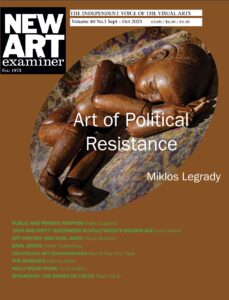
Annie Markovich

This is one of Pissarro’s most painterly prints. Aquatint with etching and drypoint on paper 15.4 × 20.8 cm (plate); 24.6 × 34.5 cm (sheet) Presented by the Pissarro Family, 1952
Thanks to the generosity of Esther Pissarro, the widow of Camille’s eldest son, Lucien, and that of their daughter Orovida, the Ashmolean Museum in Oxford is home for the Pissarro family archive of paintings, drawings and prints. The exhibition at the Ashmolean was filled with a large group of viewers eager to stand in front of a Pissarro.
Pissarro was called the Father of Impressionism by Cezanne because he nurtured painters and encouraged freedom of expression in which they could discover their own voice, no matter what. This is a valuable lesson for every artist. Despite petty criticism during the 19th-century in France, Pissarro fervently and faithfully stuck with painting as an honourable, worthy way of life.
Curators have added paintings and drawings of Pissarro’s friends including Cezanne, Renoir, Manet, Sisley, Seurat and Degas. These relationships influenced each other and provided a creative stimulus. Before Pissarro’s paintings I am speechless. I haven’t changed my mind about Pissarro ever since I first met him looking at his paintings in the Art Institute of Chicago decades ago. I realised at the time he was not a star artist like his colleagues Monet, van Gogh, Degas or Cezanne. Perhaps he felt comfortable in the background without the fanfare and noise of fame. Maybe he knew the price of fame. At any rate he continued to paint all his life well into his 80s, not the bright brush pearlescent fluorescent colours of Monet but the subtle ever-changing hues of fall, winter, late summer and early spring when the tonality is less loud than coloratura.
In the The Quarry, every inch of the canvas is important. There is a story here and it is told with masterly attention to the visual language. One of hardest challenges to tackle in painting is treating the entire picture at once, it’s as if the artist would be painting everything on the canvas simultaneously and yet, if I look at works of art that have influenced generations of artists throughout space and time, it is just this simple feature that stands out.
Pissarro painted outdoors and indoors, preferring outdoor plein air. He experiments with Seurat in pointillism. Although the technique was created to allow greater luminosity, Pissarro discovered the technique limited his ability to express sensation felt in front of the subject as it is a painstakingly tedious technique. Pissarro taught and encouraged each of his six children, much to anxiety of their mother Julie, who hoped for income-producing careers for the children. One of the most poignant paintings in the show is a portrait of his daughter Minette painted while she was terminally ill. The painting of Minette is left unfinished. The public prefers eye-catching demonstrative art, but in this work the still quiet voice of Pissarro preserves our understanding of what it means to be true to oneself in expression, whatever that may take in whatever form that may shape. A bouquet of pink peonies startles in its simplicity. This painting requires careful observation. The bold application of dark green paint for the leaves makes the definition look spontaneous, and so lovely it appears easy.
We are living in an unprecedentedly chaotic (at least for this generation), place in history when life feels, to say the least, out of balance and unpredictable and out of sync, without a natural rhythm. To enter a museum sans mask and look at these Pissarros feels like a visual, emotional and spiritual gift.

